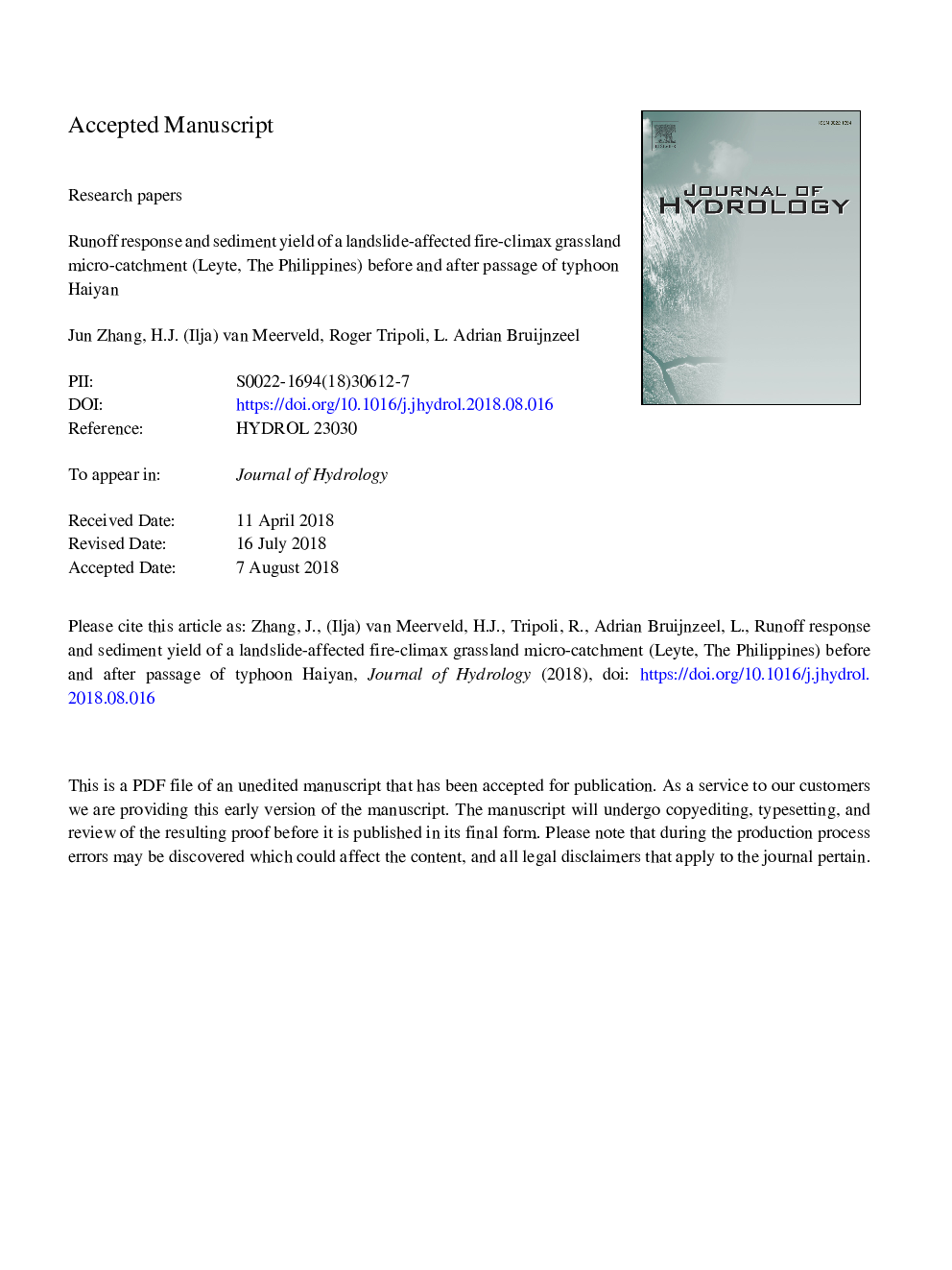| کد مقاله | کد نشریه | سال انتشار | مقاله انگلیسی | نسخه تمام متن |
|---|---|---|---|---|
| 10118240 | 1629889 | 2018 | 65 صفحه PDF | دانلود رایگان |
عنوان انگلیسی مقاله ISI
Runoff response and sediment yield of a landslide-affected fire-climax grassland micro-catchment (Leyte, the Philippines) before and after passage of typhoon Haiyan
دانلود مقاله + سفارش ترجمه
دانلود مقاله ISI انگلیسی
رایگان برای ایرانیان
کلمات کلیدی
موضوعات مرتبط
مهندسی و علوم پایه
علوم زمین و سیارات
فرآیندهای سطح زمین
پیش نمایش صفحه اول مقاله

چکیده انگلیسی
Decades of logging and slash-and-burn agriculture have turned vast tracts of land in tropical South-east Asia into unproductive fire-climax grasslands whose hydrological functioning is poorly known. To help fill this knowledge gap, a 3.2â¯ha landslide-affected Imperata grassland micro-catchment with perennial flow on Leyte Island (Philippines) was instrumented and monitored for a year. The area was hit by typhoon Haiyan on 8 November 2013, one of the largest events on record. Landslide surfaces covered 3.4% of the catchment prior to typhoon Haiyan and contributed to 'direct runoff' (Qq). This basic 'contributing area' increased to 7.7% by activation of old landslides and formation of new ones during typhoon Haiyan. Median storm runoff coefficients (Qq/P) based on straight-line hydrograph separation were 9% and 23% before (48 events) and after the typhoon (43 events), respectively, but the ratios of period-total Qq and P were much larger (24% and 47%, respectively). Both storm runoff volumes and peak discharge increased rapidly once a mid-slope water storage threshold for the upper 60â¯cm of soil of 250â¯mm was exceeded. Storm runoff contributions above those generated on landslides were most likely in the form of overland flow given the prevailing very low soil hydraulic conductivities. Post-typhoon water use of the heavily disturbed vegetation was reduced initially by nearly 70%, recovering to nearly 80% of the pre-typhoon value after â¼3â¯months. The high annual sediment yield (â¼27â¯tâ¯haâ1) was heavily dominated by post-Haiyan sediment transport (94%); bedload contributed â¼8% of the total sediment yield.
ناشر
Database: Elsevier - ScienceDirect (ساینس دایرکت)
Journal: Journal of Hydrology - Volume 565, October 2018, Pages 524-537
Journal: Journal of Hydrology - Volume 565, October 2018, Pages 524-537
نویسندگان
Jun Zhang, H.J. (Ilja) van Meerveld, Roger Tripoli, L. Adrian Bruijnzeel,